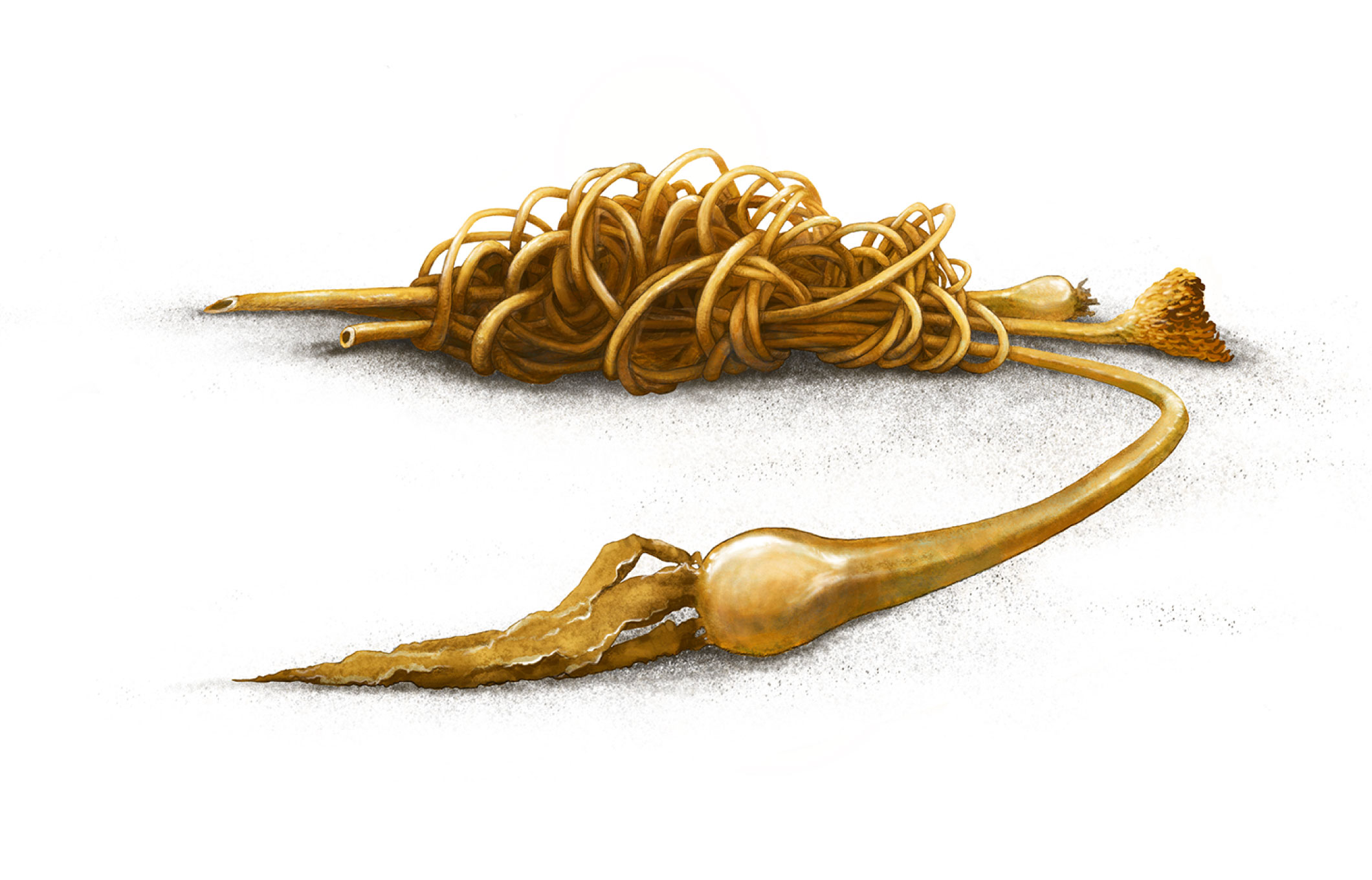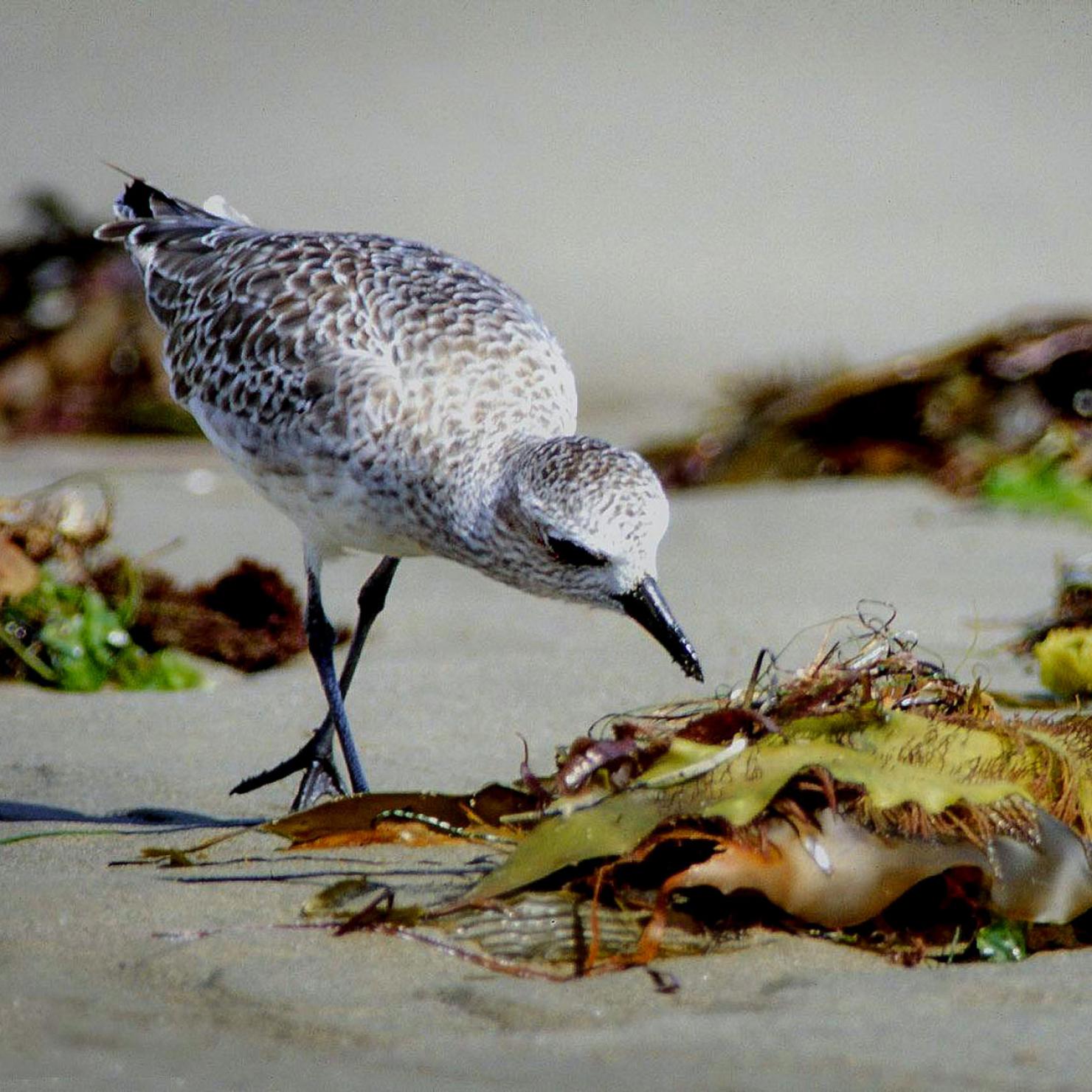Another form of bull kelp wrack is found on spring beaches: tiny, baby bull kelp will be found at the water’s edge, bulbs the size of fingernails, with just four golden blades streaming in the sunlight, a thread of stipe and tiny holdfast. These are magical and precious signifiers of the new kelp growth in some unseen bed out beyond the waves and remind us that bull kelp is an annual, growing from microscopic gametophytes to the these delicate tiny sporophytes, to the massive tangles in a matter of months. These months of enormous growth—using the power of sunlight to fuel photosynthesis together with the enormous nutrient availability in cold Pacific Ocean waters—are the spring and summer months of extended sunlight and calmer seas. By late summer the dark brown sori patches in the blades of the mature kelp fall away, the spores dispersing as lipid rich zoospores that can swim about, eventually landing in cracks in the rocky benthos to germinate into the microscopic male or female gametophytes creating egg and sperm—one fertilizing the other and start the cycle anew. In wintertime, the storms and hyperdynamic wave action rip clumps of the majestic bull kelps from their tether to the rocky bottom. Nereocystis often grows with its long, singular line of stipe twisted with other stipes, so that when one holdfast gives way, the entire clump is forced up and at the mercy of the waves.
Is Kelp a Carbon Sink?
It is suggested that some of this kelp matter might be deposited in the deeper waters, thus sequestering the carbon in its bodies, but this is not recorded or known. It is true that kelp, and especially bull kelp, are remarkably efficient at pulling CO2 out of ocean water and transforming it into biomass. This is the power of photosynthesis. But unlike the trees of a forest on land, kelp is constantly desiccating and degrading, shedding and sloughing. Bull kelp’s biomass is only in existence for a short while before it and its carbon degrade back into the ocean waters to become part of the complex foodweb around it. The carbon sequestration touted by proponents of kelp farming and kelp restoration projects is ephemeral—not a permanent fix—but a reminder of how dynamic the kelp forest is in cycling nutrients and carbon through food webs and shoreline ecologies. Maybe it is not as useful for solving our human dilemmas but extraordinarily important for the health of a panoply of species and their interrelationships.
Blue Carbon
Blue carbon refers to the carbon stored in coastal and marine ecosystems. Mangroves, tidal marshes, and seagrass meadows are known marine ecosystems that sequester carbon. As algae, kelp is more mysterious. Work is being done to figure out if kelp can be calculated to sequester carbon, given its ephemeral nature.







